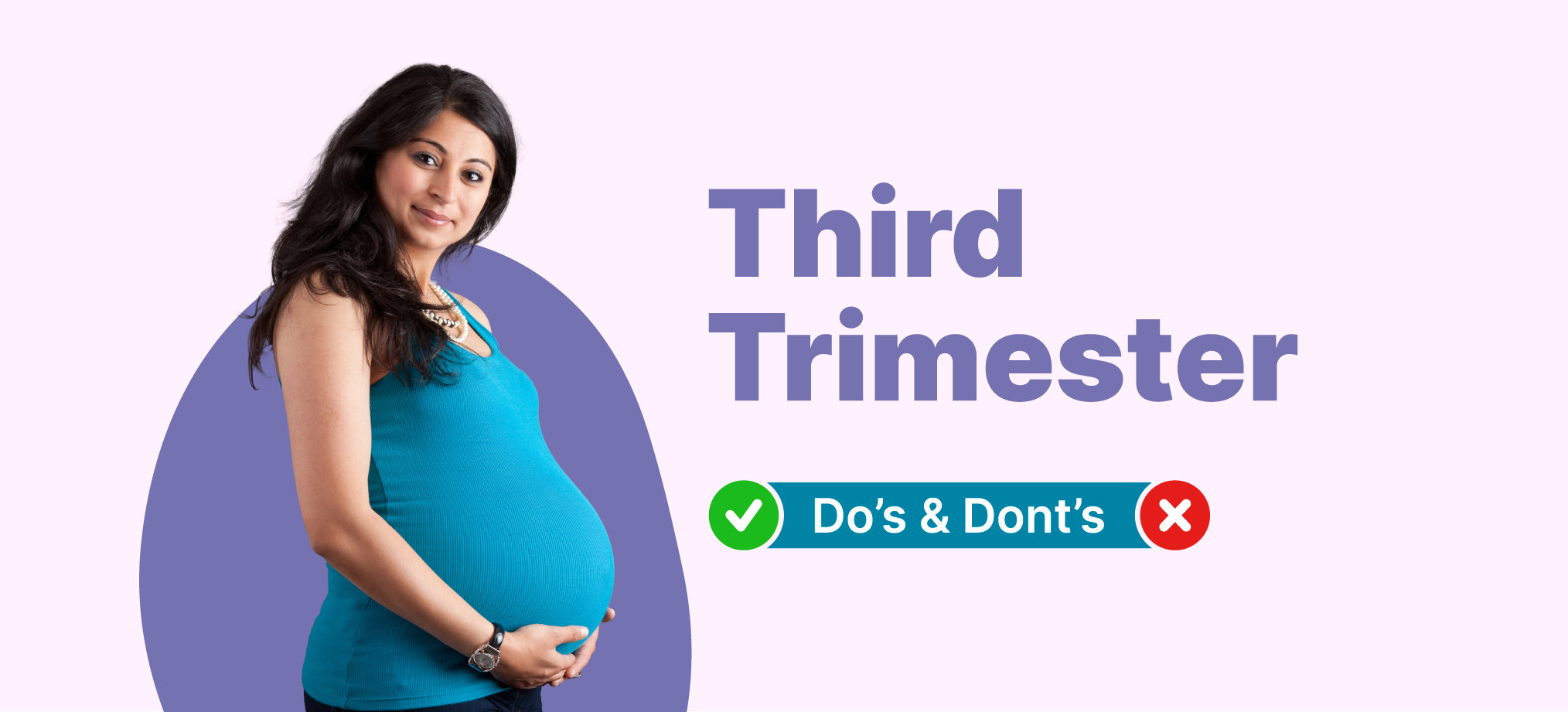- Home
- Blog
- Mom & Baby Care
What Happens If The Umbilical Cord Wraps Around The Baby’s Neck In The Womb?
Mom & Baby Care
What Happens If The Umbilical Cord Wraps Around The Baby’s Neck In The Womb?
By Apollo 24|7, Published on- 26 May 2023, Updated on -16 June 2023
Share this article
0
9 likes

The umbilical cord is often called the 'life conduit' between the developing baby and the placenta. The placenta is a temporary organ, with two arteries and one vein, that forms in the womb during pregnancy. The foetus derives nutrition, oxygen, and blood through the umbilical cord.
However, there may be cases where the umbilical cord goes around the neck of the foetus, forming a loop sometimes even multiple loops. This condition is called a nuchal cord. This loop may interfere with the transfer of nutrients and oxygen to the developing embryo and lead to nuchal cord complications.
Most nuchal cord cases are harmless and likely to resolve before childbirth. Even if the coil is present when you go into labour, most newborns do not develop nuchal cord complications due to the cord. If your doctor suspects an enlargement of the loop, they may deliver the baby through a C-section.
Nuchal cord cases are quite common in India, with a varied prevalence of 6% to 37%. According to an Indian study, the occurrences of single nuchal cord, double nuchal cord, and triple nuchal cord in the country were at 5.32%, 1.14%, and 0.17%, respectively. Let's know more about this condition.
What Leads to the Formation of a Nuchal Cord?
Two of the most common reasons for the formation of the nuchal cord include:
1. Foetal movement: One of the main reasons behind a nuchal loop formation is excessive movement of the foetus inside the womb.
2. Medical causes: Some medical reasons may also cause the umbilical cord to loop around the baby's neck. These include:
- Having multiple pregnancies
- Excess of amniotic fluid, making the baby move more rapidly
- An extra-long umbilical cord
- A weak umbilical cord
- According to research, the chances of complications may increase if the entanglement happens from an extra-long umbilical cord.
What Are the Symptoms Indicating the Formation of a Nuchal Cord?
Most women do not understand a nuchal loop has developed until they take their routine ultrasound. In most cases, the doctors discover the entanglement during delivery. However, some expecting mothers may notice the following signs:
- A reduction in the foetus' usual movements
- The foetus moves quite a lot for some time, and then the movements reduce in an attempt to detangle the coil
If you sense that something may be wrong with your baby, visit your doctor at the earliest.
How Is a Nuchal Cord Diagnosed?
In general, the formation of the nuchal loop is found during your routine check-up, usually an ultrasound scan, as there are no physical attributes of a nuchal loop. However, if the foetus shows signs of breathing difficulties or an abnormal heart rate, your doctor may recommend another ultrasound.
When Is a Nuchal Cord Considered Dangerous?
Studies say a nuchal cord is unlikely to pose any severe risk for the child or the mother. Your doctor will monitor the foetus closely during childbirth if they find a nuchal cord through imaging tests during pregnancy.
However, if the cord goes around the baby's neck or any other part, blood circulation in the loop may reduce during contractions. It can also slow down the baby's heart rate. Moreover, if blood circulation is completely cut off before delivery, it may lead to stillbirth. However, such chances are rare.
How Does a Delivery Feel with a Nuchal Cord?
Once you go into labour, your doctor and the team will not try to unloop or relax the cord as it could be risky. Various studies reveal that keeping the nuchal loop intact allows for better delivery. Once the baby is out, birthing specialists will untangle the loop.
If your doctor has diagnosed a nuchal cord during your routine examination, do not worry. This condition is rarely concerning. Your doctors will monitor your pregnancy and your baby's heart rate to ensure successful and healthy delivery.
To sum it up, nuchal cords are a common condition, with no reason to panic. If your doctors suspect a cause for concern, they are likely to recommend a caesarean birth. However, if, as a mother, something about your pregnancy is bothering you, speak to your doctor right away.
Consult Apollo’s Expert Gynecologists
FAQs
1. Can you prevent the formation of a nuchal cord?
Currently, there are no methods to treat or prevent the formation of a nuchal loop. Once diagnosed, the doctors wait till delivery.
2. Does your sleeping posture make the umbilical cord entangle the baby's neck?
A mother's sleeping position is likely to impact the umbilical cord. Therefore, doctors recommend expecting women to sleep on their left (lateral).
3. What is the usual length of an umbilical cord?
An umbilical cord usually measures around 21 inches, between 50 cm and 60 cm.
4. Can a nuchal cord uncoil on its own?
A nuchal cord is likely to develop, uncoil, and recoil on its own. However, if it gets locked, it is unlikely to uncoil. If your delivery date is almost there, the management of the loop depends on the condition of your baby and the tightness of the cord.
5. What are the various types of a nuchal cord?
There are two types of nuchal cords: type A and type B. The former surrounds the neck of the baby in an unlocked manner, while the latter presents in a locked form.
Medically reviewed by Dr Sonia Bhatt.
Services
Mom & Baby Care
Leave Comment
Services
Recommended for you

Mom & Baby Care
Third Trimester Of Pregnancy: Here’s What To Do And What Not To Do
By the third trimester of pregnancy, the baby is developed fully and is ready to get delivered. Read to know what precautions must be taken by pregnant women during this period to ensure safe delivery.

Mom & Baby Care
How To Confirm Pregnancy In The First Month?
Know everything about early pregnancy detection. Starting from detecting symptoms to choosing the right pregnancy test and seeking advice from healthcare experts, this exclusive guide will equip you for a confident and happy pregnancy journey.

Mom & Baby Care
Here's How To Get A Flat Tummy Post Pregnancy
Learn all about postpartum diet, exercises and other techniques to get a toned tummy after childbirth.
Subscribe
Sign up for our free Health Library Daily Newsletter
Get doctor-approved health tips, news, and more.


